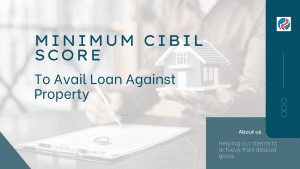Applying for a loan against property can be an effective way to secure financing for various personal or business needs. However, navigating the world of loans against property can be challenging, especially if you are unfamiliar with the jargon and technical terms. To help you better understand this financial product, we have compiled a comprehensive glossary of terms related to loans against property.
- Loan Against Property (LAP)
Loan Against Property (LAP) is a type of secured loan in which the borrower pledges a property (residential, commercial, or industrial) as collateral to obtain funds. LAP can be used for various purposes, including business expansion, debt consolidation, or financing higher education.
- Collateral
Collateral refers to an asset, such as property, that is pledged as security for a loan. In case the borrower fails to repay the loan, the lender has the right to seize and sell the collateral to recover the outstanding loan amount.
- Loan-to-Value (LTV) Ratio
The Loan-to-Value (LTV) ratio is the percentage of the property’s market value that the lender is willing to finance through the LAP. LTV ratios typically range from 50% to 75%, depending on the lender’s policies and the borrower’s credit profile.
- Equitable Mortgage
An equitable mortgage is a type of mortgage in which the borrower transfers the property’s title deeds to the lender as security for the loan. The borrower retains possession and use of the property, while the lender holds the title deeds until the loan is fully repaid.
- Tenure
Tenure refers to the loan repayment period or the duration within which the borrower must repay the loan in full. Loan against property tenure usually ranges from 5 to 20 years, depending on the lender and the borrower’s repayment capacity.
- EMI (Equated Monthly Instalment)
EMI stands for Equated Monthly Instalment, which is a fixed monthly payment made by the borrower to the lender to repay the loan. The EMI consists of both the principal and interest components, with the proportion of each varying over the loan tenure.
- Prepayment
Prepayment is the act of repaying a portion or the entire loan amount before the end of the loan tenure. Some lenders may charge a prepayment penalty for early repayment, while others may allow partial or full prepayment without penalty, depending on their policies and the loan terms.
- Foreclosure
Foreclosure is the legal process through which a lender repossesses and sells a property when the borrower defaults on the loan. The proceeds from the sale are used to repay the outstanding loan amount and any additional costs incurred by the lender during the foreclosure process.
- Default
Default occurs when a borrower fails to meet their loan repayment obligations, such as missing EMI payments or not repaying the loan by the end of the tenure. Default can lead to foreclosure and negatively impact the borrower’s credit score.
- Processing Fee
The processing fee is a one-time charge levied by the lender to cover the costs of processing and disbursing the loan. Processing fees vary between lenders and typically range from 0.5% to 2% of the loan amount.
- Property Valuation
Property valuation is the process of determining the market value of the property being pledged as collateral. Lenders conduct property valuations to assess the property’s worth and determine the maximum loan amount they are willing to offer.
- Credit Score
A credit score is a numerical representation of an individual’s creditworthiness, which is based on their credit history and financial behavior. A high credit score indicates a lower risk of default, and borrowers with high credit scores are more likely to secure favorable loan terms, including lower interest rates and higher loan amounts.
- Interest Rate
The interest rate is the cost of borrowing money, expressed as a percentage of the loan amount. In the case of a loan against property, the interest rate can be either fixed or floating. Fixed interest rates remain constant throughout the loan tenure, while floating interest rates are linked to market rates and may fluctuate over time.
- Floating Reference Rate (FRR)
The Floating Reference Rate (FRR) is a benchmark rate used by lenders to determine the interest rate for floating rate loans. The FRR is typically linked to market rates, such as the Marginal Cost of Funds based Lending Rate (MCLR) or the Repo Rate. As market rates change, the FRR and the floating interest rate on the loan may also change.
- Debt-to-Income Ratio
The Debt-to-Income (DTI) ratio is a measure of a borrower’s ability to manage their debt repayments relative to their income. Lenders use the DTI ratio to assess a borrower’s repayment capacity and determine the maximum loan amount they can offer. A lower DTI ratio indicates a better ability to manage debt and is more favorable in the eyes of lenders.
- Mortgage
A mortgage is a legal agreement between a borrower and a lender, wherein the borrower pledges a property as collateral to secure a loan. The lender holds the property title until the loan is fully repaid, at which point the title is transferred back to the borrower.
- Disbursement
Disbursement refers to the process through which the lender releases the loan funds to the borrower. The disbursement can be made in a lump sum or in installments, depending on the loan terms and the borrower’s requirements.
- Power of Attorney
A Power of Attorney (POA) is a legal document that allows one person (the principal) to grant authority to another person (the agent) to act on their behalf in specified matters, such as managing the property or handling loan-related transactions. In the context of a loan against property, a POA may be required if the borrower is unable to manage the property or the loan personally due to various reasons, such as residing abroad or being incapacitated.
Conclusion
Understanding the terminology associated with loans against property can help you make informed decisions and navigate the loan application process with confidence. By familiarizing yourself with the concepts and terms in this comprehensive glossary, you can better understand the loan features, assess your eligibility, and negotiate favorable loan terms to meet your financial needs.









